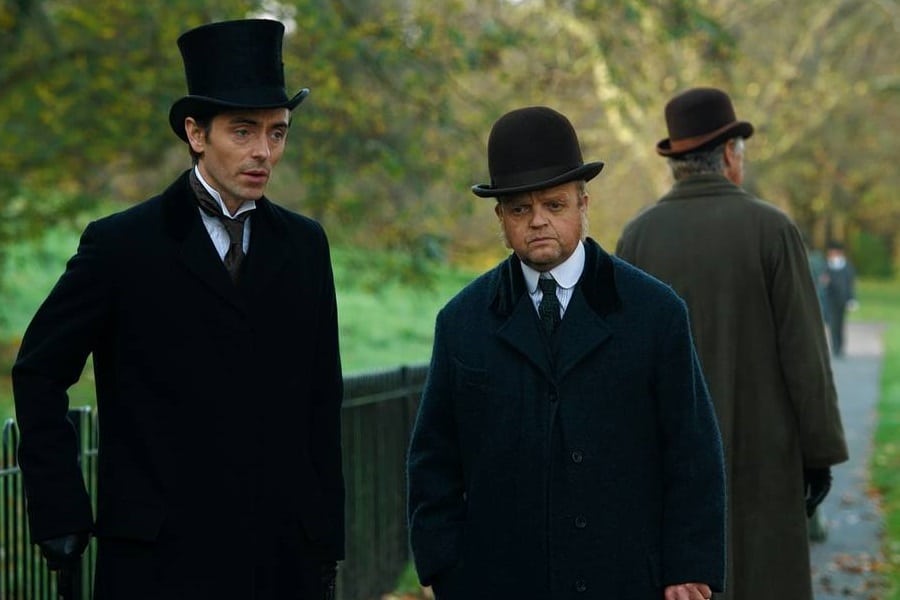
Crafting the Character
We’ve all met that one mystery novel character—the kind who’s as thin as the paper they’re printed on. They exist only to push the plot forward, offering no real intrigue or complexity. But what about the characters that make you pause, wondering, “What’s their real story?” These are the ones that get under your skin, who keep you guessing even after the final page is turned.
Take Dr. Sarah Baldwin from The Fall by R. K. Narayan. She’s sharp, composed, and seemingly unflappable. But as we follow her through Narayan’s winding narrative, we uncover emotional scars and hidden motivations that make her as puzzling as the mystery she’s caught in. She isn’t just there to fill a role; she’s actively challenging the plot—and herself—with every decision.
So how do you create characters that are just as enigmatic as the crime they’re trying to solve? Here are some advanced techniques to give your characters a sense of mystery, complexity, and depth, just like the hidden gems of the genre.
1. The Art of Contradiction: Make Them Unpredictable
People are walking contradictions, and your characters should be no different. Take Penelope Featherington from The Eustace Diamonds by Anthony Trollope. At first glance, Penelope seems like a demure society lady, concerned with appearances and decorum. But the further you go, the more you realize she’s not afraid to get her hands dirty when the stakes are high—whether that’s manipulating those around her or going against the grain to protect her secrets.
When you’re crafting your characters, think about how you can juxtapose their public personas with private truths. A brilliant detective who suffers from crippling self-doubt or a seemingly innocent victim who’s concealing something sinister? These contradictions keep your readers guessing.
2. Subtext: What They Don’t Say Matters
Subtext is a powerful tool, and often what a character doesn’t say is more revealing than what they do. A perfect example is in the TV adaptation of The Secret Agent by Joseph Conrad. Winnie Verloc, the wife of a bumbling spy, is outwardly supportive and stoic. But beneath her placid exterior, she harbors a seething resentment and a desire for escape. The tension builds through her silences, her sideways glances, her unspoken words.
For your own characters, consider what’s left unsaid. What are they hiding from others—and from themselves? What’s bubbling beneath their calm surface, ready to erupt at just the right moment? Subtext adds layers of mystery without being obvious about it, making your characters far more interesting than if they laid all their cards on the table.
3. Moral Dilemmas: The Heart of Complexity
Real people—and the best fictional characters—aren’t black and white. The most engaging figures face tough moral decisions that push their limits. Take In the Woods by Tana French. Detective Rob Ryan is investigating a case eerily similar to one he was involved in as a child, but he’s forced to keep his personal connection a secret. The moral dilemma of whether to come clean or stay silent gnaws at him, coloring every decision he makes.
A great way to flesh out a character is by giving them a moral dilemma where no choice is the right one. Should they break the law to achieve justice? Should they betray someone to protect themselves? These dilemmas force characters to confront their own values—and reveal hidden facets of their personalities.
4. Nonverbal Communication: Show, Don’t Tell
Body language and subtle actions can say so much more than dialogue. Think of the film adaptation of The Night Manager by John le Carré, specifically the character of Richard Roper. While Hugh Laurie’s Roper is outwardly charming and sophisticated, it’s in his smallest gestures—like a cold, lingering gaze or a calculated pause—that his menace is fully revealed.
In your own work, consider how nonverbal cues can convey deeper truths about your characters. Maybe your private eye keeps cracking their knuckles when they’re nervous, or your suspect avoids eye contact when lying. These physical details can add layers of meaning, giving readers more to work with than just what’s spoken.
5. Ambiguity and Mystery: Keep Readers Guessing
Not everything about your character needs to be clear-cut. In fact, some of the most memorable characters are those who leave you with unanswered questions. Take The Alienist by Caleb Carr. Dr. Laszlo Kreizler is a brilliant psychologist and criminal profiler, but his own past is shrouded in mystery. Throughout the book, we get glimpses of his troubled background, but much remains unsaid, allowing readers to form their own conclusions.
Leaving some aspects of your characters open to interpretation can add depth and intrigue. Perhaps your detective has a past trauma they only hint at, or maybe your villain’s motivations remain cloudy until the very end. Ambiguity keeps readers hooked, forcing them to puzzle over your character long after the final chapter.
6. Rituals and Habits: The Quirks That Define Them
Characters are often defined by the little things they do, the habits and rituals that make them feel real. Take Bernie Rhodenbarr from Lawrence Block’s Burglar series. Bernie, a professional thief, runs a secondhand bookstore when he’s not breaking and entering. This quirky duality—bookseller by day, burglar by night—makes him feel like a fully realized character instead of a stock antihero.
Giving your characters unique rituals or habits can make them stand out. Maybe your detective has an odd obsession with collecting matchbooks from every bar they’ve visited, or your villain meticulously arranges their workspace before executing their next crime. These small, specific details bring characters to life and make them stick in your readers’ minds.
The Final Twist
So, when you’re crafting your next detective, villain, or victim, remember that the mystery doesn’t stop at the plot—it extends to your characters. By layering them with contradictions, moral dilemmas, unspoken truths, and quirks, you’ll create characters who are just as enigmatic and compelling as the crimes they’re involved in.
Just don’t reveal all their secrets too soon—because where’s the fun in that?
Similar Features
On the Hunt for a Mystery
How to Select Your Next Mystery Book
Querying a Mystery
How to Write a Query Letter That Won’t Get You Ghosted
Subtext in Suspense Scripts
How Subtext Drives Suspense in Thrillers and Mysteries



